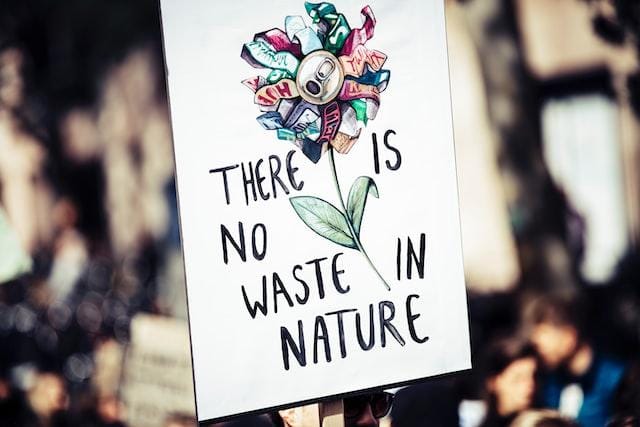
If you’re thinking of switching to green living, you’ve probably encountered some misconceptions about what this term means. We’re here to debunk those myths once and for all. If you’re ready to make a change, we’ll help you how to go about it in a way that best suits your needs.
Green living is expensive
While it’s true that investing in certain green technologies and practices can be pricey, the overall cost of a green lifestyle is not much higher than a conventional one. Many people find they save money by going green. For example, if you’re currently paying your utility company hundreds of dollars each month to keep the lights on and the heat running at home and then throw in an expensive gym membership for good measure. You might want to consider lowering both those costs by installing solar panels on your roof or buying an electric car (and charging it with solar panels). Another good way to get more bang for your buck is by buying used appliances instead of brand-new ones.
Green living is inconvenient
Many people think that sustainable living is inconvenient and expensive. This couldn’t be further from the truth! There are plenty of eco-friendly alternatives to common household products, making it easy to reduce your carbon footprint step by step.

And if you still feel like you’re missing out on something, don’t worry. There are plenty of ways to make your life eco-friendlier without giving up your personal pleasures or sacrificing convenience. If you’re looking for a way to spice up your home decor without resorting to artificial flowers and other synthetic materials, try growing some herbs or plants in terracotta pots instead! You’ll be surprised at how easy it can be!
If a product claims to be green, it’s eco-friendly
You may think that an eco-friendly product contains recycled materials or is made from natural ingredients. But it’s not always the case. Some products may contain recycled materials but are packaged in non-recyclable materials.
Similarly, a product can be made from eco-friendly materials but may not be recyclable or biodegradable. For example, plastic straws are often marked as “recyclable” even though they cannot be recycled into another type of plastic. Therefore, they become non-biodegradable waste once they reach a landfill or recycling facility.
The only way to live a green life is to give up your car and move to the city
You don’t have to give up your car to live a green life. There are many ways you can make your driving eco-friendlier while still driving around in your vehicle. If you want to lead a minimalist lifestyle and save the environment, here’s what you can do:
- Take public transport or ride a bicycle instead of driving every day.
- Walk more and use the bus or train when possible.
- Buy used cars (and bikes!) that were made before 2001. These emit less carbon dioxide into the air.
Recycling is all you need to do to live a green life
Recycling is a great way to reduce waste and help the planet, but it’s not all there is about green living – recycling is just one of many ways to be green. Additionally, if you’re committed to your eco-friendly lifestyle and want to see it through every day of your life (and not just on special occasions), consider these other ways:

- Composting food scraps and other biodegradable materials at home (or finding somewhere nearby that takes them) can reduce landfill waste by up to 50 percent! This process also creates nutrient-rich soil for gardens—so you’re helping out the environment twice!
- Reusing things like water bottles instead of throwing them away every time they fill up is another easy way to reduce the trash in landfills. Buying eco-friendly products rather than disposable ones will also help save both energy and resources during manufacturing processes.
There are no regulations on green products
The green label is a voluntary standard. That means companies can put it on anything they want, and there are no regulations on what can be called “green.”
There are regulations for what can be called organic, though. A green label isn’t a guarantee of quality or safety. However, it does indicate that manufacturers have made some effort to reduce their environmental impact in the manufacturing process. If you’re looking for an environmentally friendly product, don’t buy something just because it has a green label.
Planning a home relocation? Organize a green move!
Packing can be one of the most stressful parts of moving, without a doubt. The last thing you want to think about is how much time, money, and stress it will take. But there are ways to make packing easier for yourself.

It would be best if you organize your belongings and make a list of everything you need to pack up. It’s easy to forget what goes where over time, so making this list beforehand will keep your sanity intact throughout the process. If you’re considering green living habits during the move, you should make sure to save your money on packing supplies and avoid additional moving expenses. Instead of buying new supplies, you can always use what you have at home.
What can you do?
Second, stock up on boxes and packing materials so that you have enough for all your stuff! You don’t want to run out halfway through packing up all your things just because you didn’t plan properly.
And thirdly (and most importantly), get rid of things that aren’t essential for living in your new place. Don’t waste energy carrying around extra belongings that could be donated or sold instead. Packing experts from muvnow.com suggest that packing light can be a great idea! It means fewer trips back-and-forth between locations, too, which saves money on fuel costs down the line too.
Final Thoughts
So, now that you know that green living isn’t just about the environment. It’s about your health and the health of those around us. That being said, there are many other myths about green living that we’ve addressed here today, which may have led you to believe differently. Hopefully, this article has helped debunk these myths so that when someone asks if something is eco-friendly or sustainable, for example, they’re able to answer confidently.
